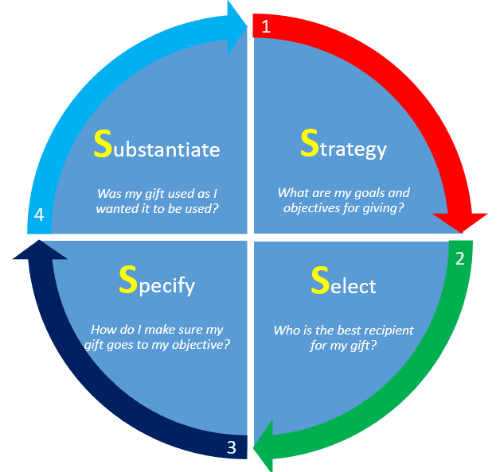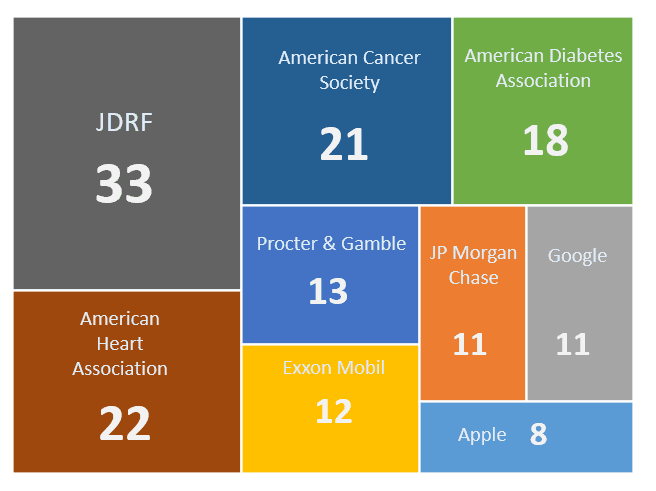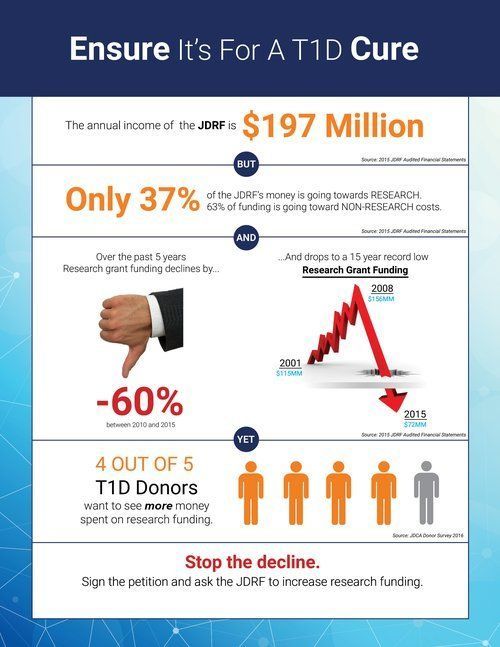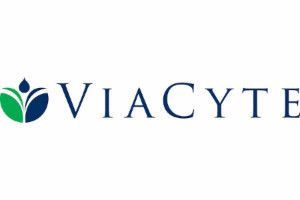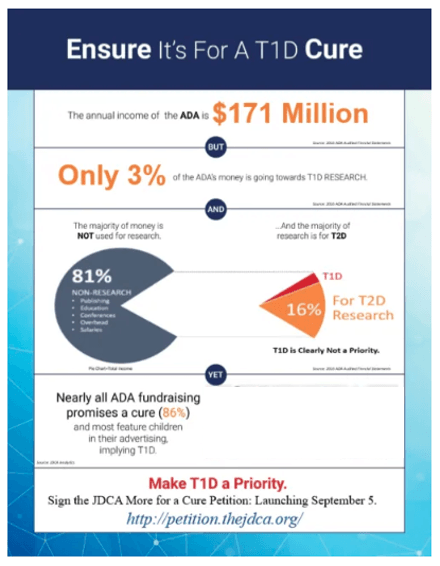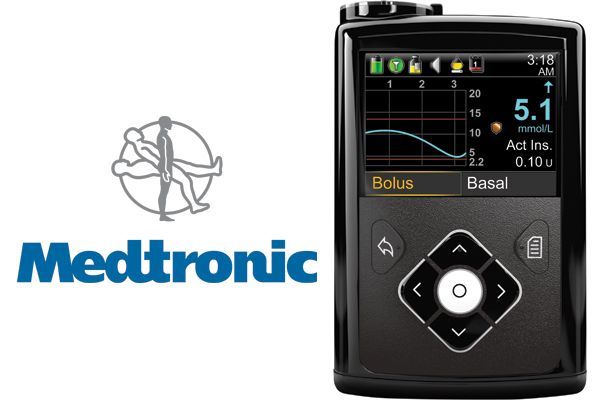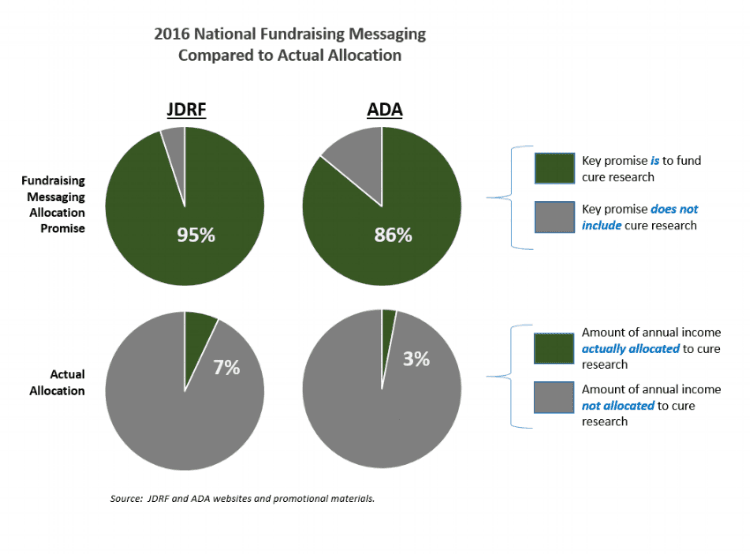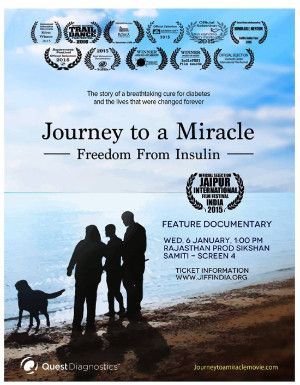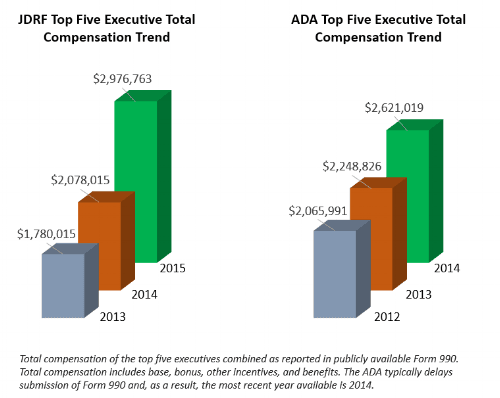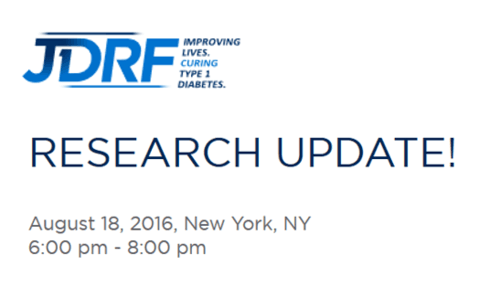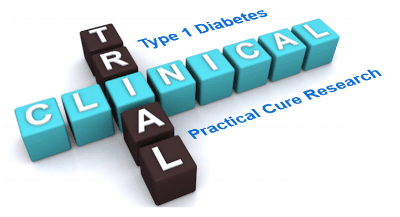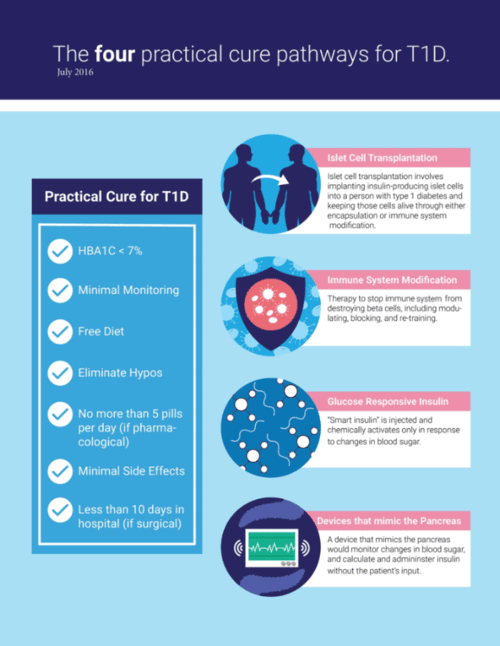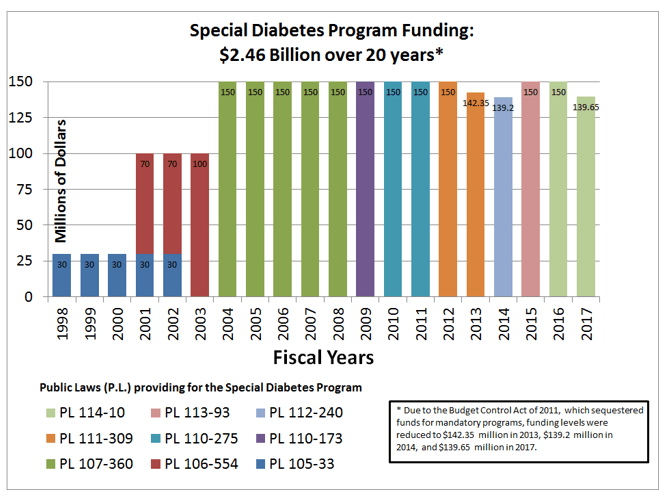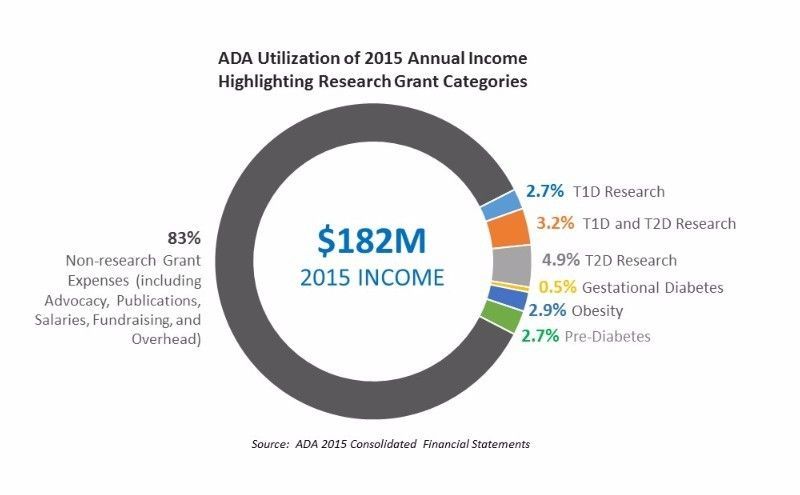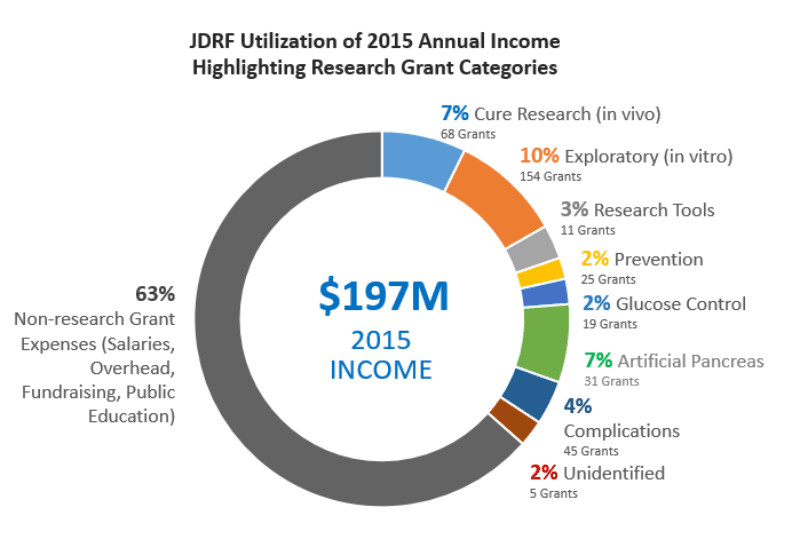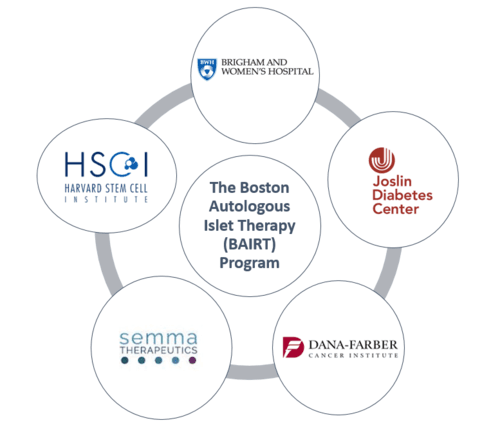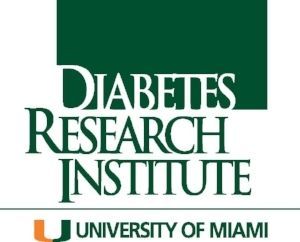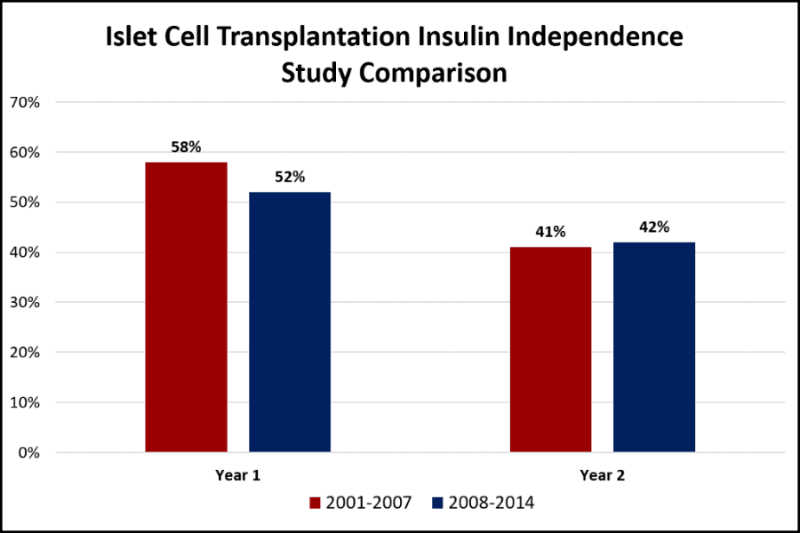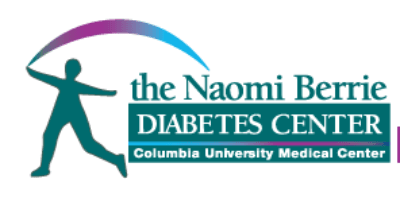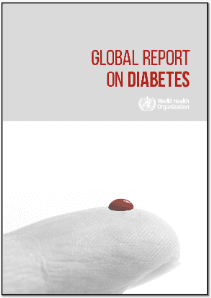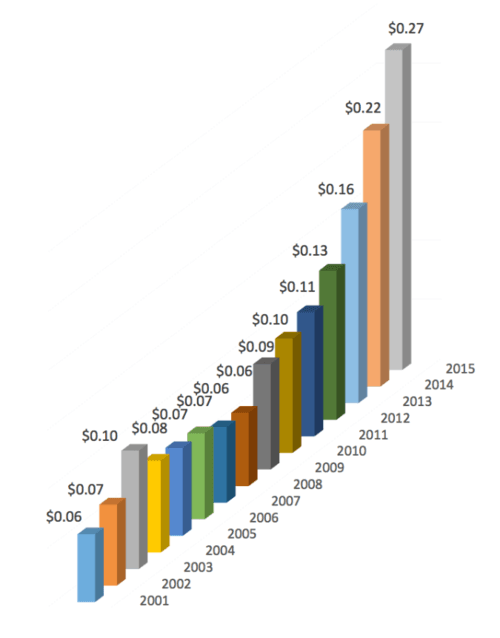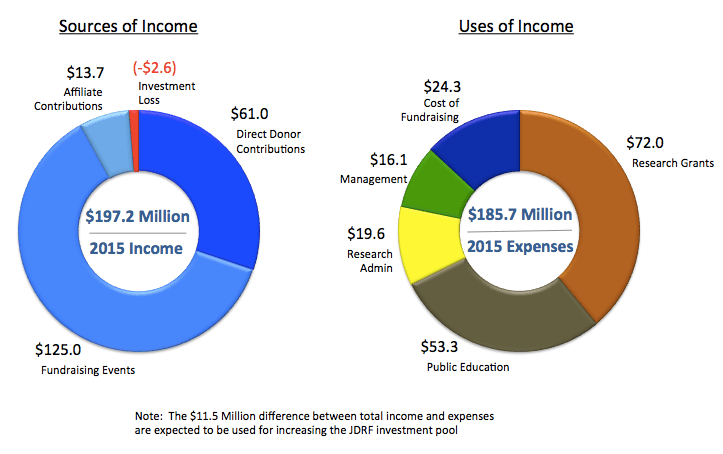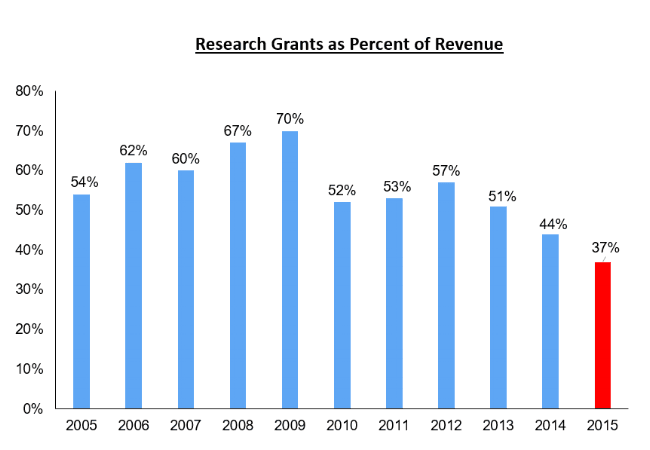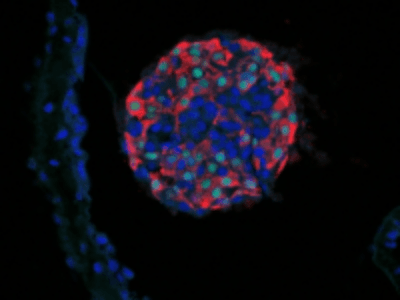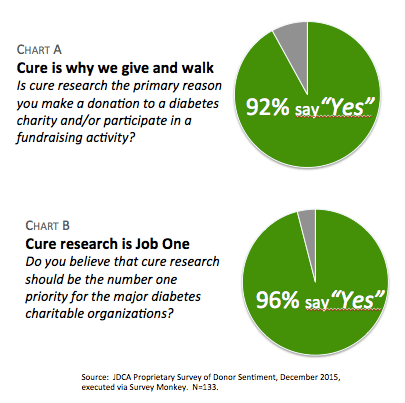With the conclusion of 2017 just around the corner, many people will make their annual donations to charitable organizations.
The Board of Directors has more influence on the performance and direction of an organization than anyone else.
The JDCA recently completed a polling survey to identify the main reasons people within the T1D community participate in diabetes fundraising walks.
The infographic posted above provides a snapshot of how the JDRF, one of the largest and most influential diabetes fundraising organizations, uses its funds.
Last week, Semma Therapeutics Scientific Co-Founder and Vice President, Felicia Pagliuca, Ph.D., presented a progress report during an industry conference in La Jolla, California, called the Cell and Gene Meeting on the Mesa.
Yesterday, the Viacyte CEO, Paul Laikind, presented a progress report during an industry conference in La Jolla, California called the Cell and Gene Meeting on the Mesa.
The infographic posted above provides a snapshot of how the ADA, one of the largest and most influential diabetes fundraising organisations in the U.S., uses its funds.
FDA approval of a closed-loop artificial pancreas has generated significant press and media coverage during the past 24 hours.
This is the fifth annual review of advertising messages used by the ADA and JDRF at national fundraising events.
A new documentary that aired on Tuesday evening asserts that T1D is often incorrectly diagnosed.
This is the fifth annual review of executive compensation for the top diabetes non-profits.
Last night the JDRF hosted a research update in New York City to discuss key developments in type 1 diabetes research and the organization's areas of focus.
This is the fourth annual review of type 1 diabetes human clinical trial research currently underway.
This is the first of two reports which will address Practical Cure projects currently in human trials.
The United States government has set aside a budget each year since 2008 to support type 1 diabetes research, named the "Special Statutory Funding Program for Type 1 Diabetes Research."
The American Diabetes Association's 76th Scientific Sessions, the largest diabetes research conference of the year, was held last weekend in New Orleans, Louisiana.
This is the fourth annual analysis of the ADA's funding for research. The main purpose of reviewing and sharing this data is to help ensure that the T1D community can make informed donation decisions.
This is the fourth annual review of JDRF research grant allocations. The main purpose of reviewing and sharing this data is to help ensure the number one priority of donors—finding a cure for T1D—is being addressed.
A new and noteworthy collaboration among five Boston-area research centers was announced last week with the goal of finding a cure for T1D.
This report provides an update on the current status of the Diabetes Research Institute's (DRI) BioHub initiative and chronicles the progression of each of the main research projects, identifying where each stands in the research progression -- laboratory, animal testing, or human trials.
New phase III study results on islet cell transplantation were published on April 18.
The JDRF announced that Mark Fischer-Colbrie will be the new Chairman of the JDRF International Board of Directors (IBOD) starting on July 1st of this year.
On April 18 the Naomi Berrie Diabetes Center of Columbia University hosted a research update in New York City.
On April 6th, The World Health Organization (WHO) published its first ever Global Report on Diabetes. It sets out to provide a comprehensive review of diabetes throughout the world and, as a result, has received a fair bit of recent press.
Perle Bioscience, a pharmaceutical company working on diabetes treatments, has ended a Practical Cure research project that was active in human trials.
JDRF's cost of administering research grants continues to skyrocket. During 2015, the internal costs associated with selecting and allocating research grants reached $0.27 per dollar of grant, a 15 year high.
This report will reveal the key sources of income for JDRF and the primary ways this money was used during 2015.
JDRF released their financials and there has been yet ANOTHER major drop in funding.
Recent study results promising in mice but may still be years away from human trials.
This is our fourth annual survey-giving report, assessing who gives to type 1 and why.

